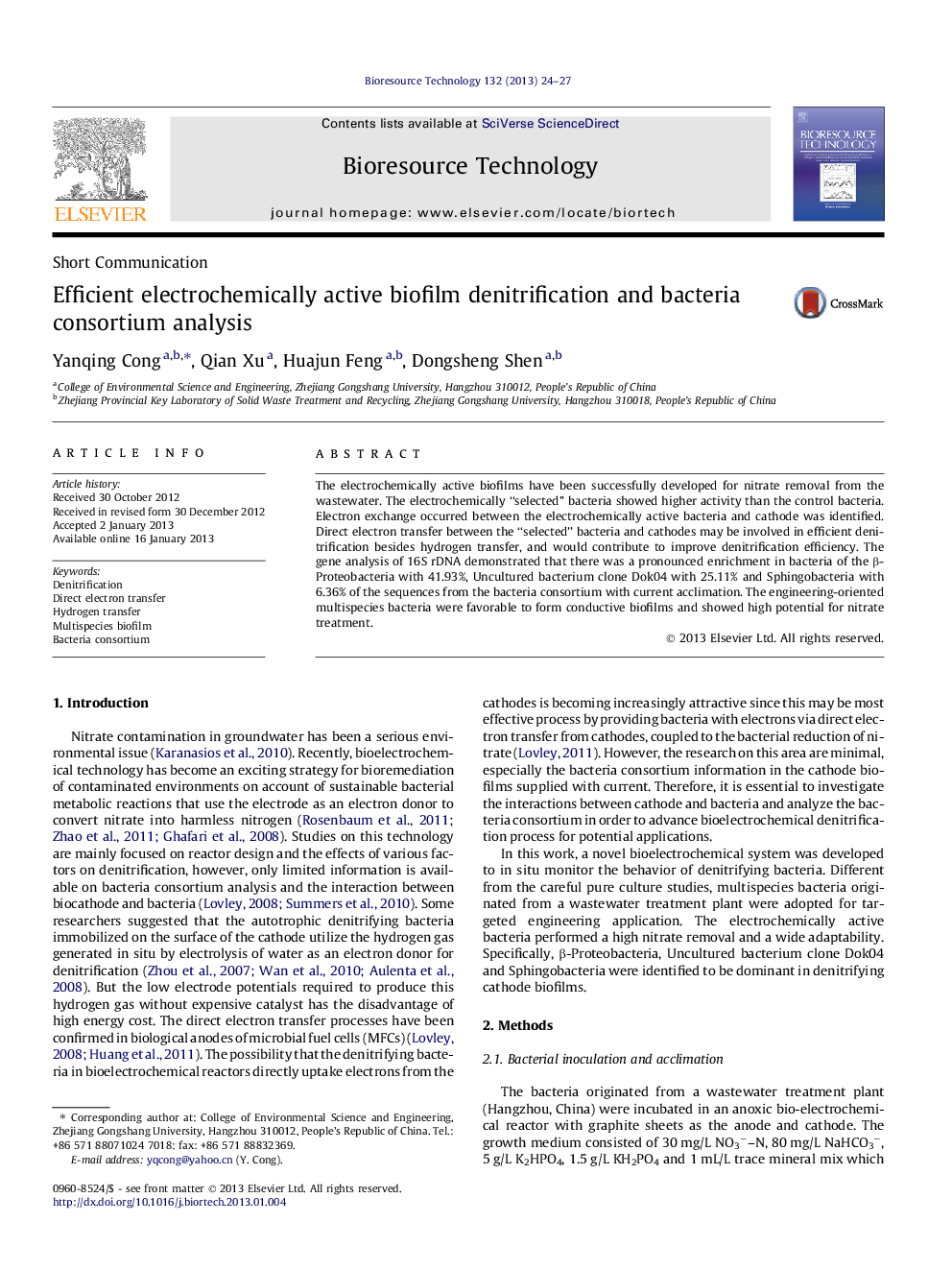| Article ID | Journal | Published Year | Pages | File Type |
|---|---|---|---|---|
| 7084559 | Bioresource Technology | 2013 | 4 Pages |
Abstract
The electrochemically active biofilms have been successfully developed for nitrate removal from the wastewater. The electrochemically “selected” bacteria showed higher activity than the control bacteria. Electron exchange occurred between the electrochemically active bacteria and cathode was identified. Direct electron transfer between the “selected” bacteria and cathodes may be involved in efficient denitrification besides hydrogen transfer, and would contribute to improve denitrification efficiency. The gene analysis of 16S rDNA demonstrated that there was a pronounced enrichment in bacteria of the β-Proteobacteria with 41.93%, Uncultured bacterium clone Dok04 with 25.11% and Sphingobacteria with 6.36% of the sequences from the bacteria consortium with current acclimation. The engineering-oriented multispecies bacteria were favorable to form conductive biofilms and showed high potential for nitrate treatment.
Related Topics
Physical Sciences and Engineering
Chemical Engineering
Process Chemistry and Technology
Authors
Yanqing Cong, Qian Xu, Huajun Feng, Dongsheng Shen,
